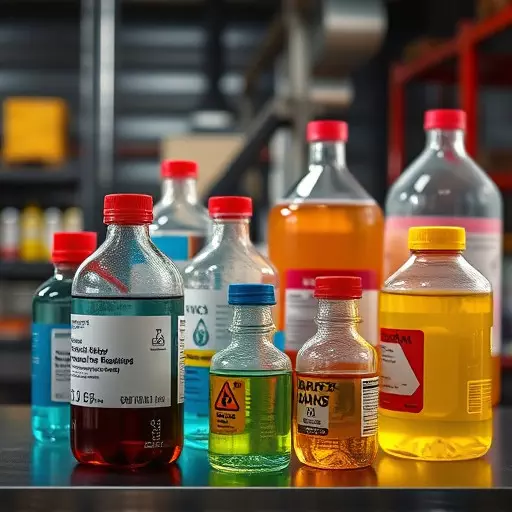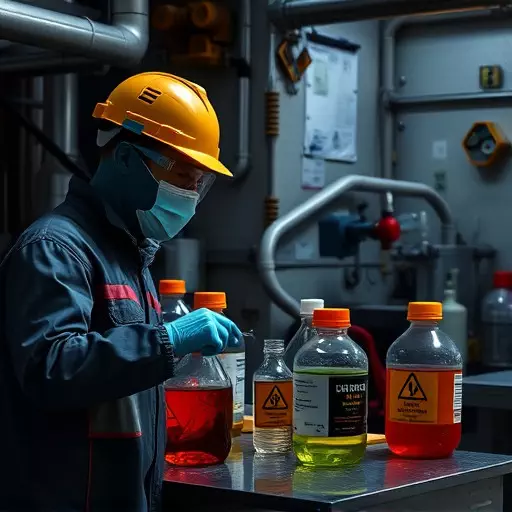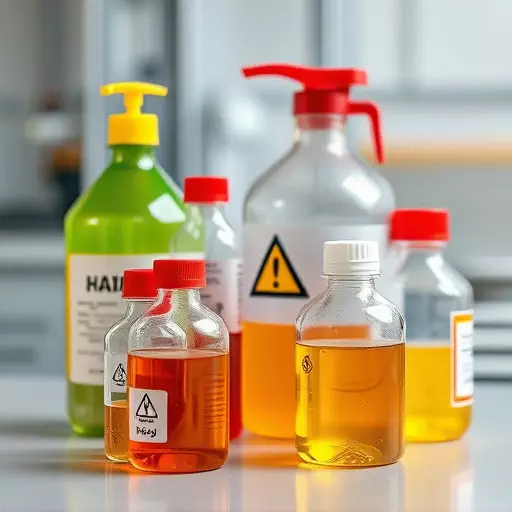In today’s rapidly evolving industrial landscape, emerging sectors face unique challenges in managing chemical exposure risks. This comprehensive guide delves into essential strategies for navigating these complexities. From identifying hazardous materials and establishing robust industrial hygiene protocols to implementing safe handling practices and empowering worker education, each step plays a crucial role in mitigating risks effectively. By exploring these tactics, industries can foster a culture of safety, ensuring both compliance with regulations and the well-being of their workforce.
- Understanding Chemical Exposure Risks in Emerging Industries
- Identifying Hazardous Materials: A Crucial Step for Risk Management
- Establishing Industrial Hygiene Protocols to Mitigate Risks
- Implementing Safe Handling Practices and Personal Protective Equipment (PPE)
- Training and Education: Empowering Workers to Manage Risks
- Monitoring and Evaluating Chemical Exposure Prevention Strategies
Understanding Chemical Exposure Risks in Emerging Industries

Identifying Hazardous Materials: A Crucial Step for Risk Management

Identifying hazardous materials is a fundamental step in managing risks associated with chemical exposure in emerging industries. Without comprehensive knowledge of the substances present, implementing effective safety measures becomes an uphill task. Industrial hygiene protocols demand that organizations thoroughly assess their operations to determine potential hazards. This involves conducting thorough material safety data sheets (MSDS) reviews and employing advanced testing methods to uncover hidden risks. By identifying hazardous materials, companies can then take appropriate actions like providing personal protective equipment (PPE), enforcing strict ventilation systems, and designing safe handling procedures.
Moreover, proper labeling and training employees on the unique properties of each chemical is essential. This proactive approach to hazard identification fosters a culture of safety, empowering workers to recognize and mitigate risks effectively. As emerging industries continue to grow and innovate, prioritizing industrial hygiene protocols will remain paramount in safeguarding both employees and the environment from the potential dangers posed by chemical exposure.
Establishing Industrial Hygiene Protocols to Mitigate Risks

Implementing Safe Handling Practices and Personal Protective Equipment (PPE)

Implementing robust safe handling practices and appropriate Personal Protective Equipment (PPE) is paramount in managing chemical exposure risk within emerging industries. Effective industrial hygiene protocols demand a comprehensive approach to identifying, assessing, and mitigating potential hazards associated with hazardous materials. This includes conducting thorough material safety data sheet (MSDS) reviews to understand the nature and extent of risks posed by chemicals used or handled in operations.
Training employees on proper handling procedures, including the correct use and maintenance of PPE, is crucial. This ensures that workers are equipped to follow industrial hygiene best practices, minimizing direct contact with hazardous substances and preventing potential health issues. Regular audits and updates to safety protocols further reinforce a culture of safety, ensuring emerging industries maintain compliance with relevant regulations while safeguarding their workforce.
Training and Education: Empowering Workers to Manage Risks

Training and education play a pivotal role in empowering workers to effectively manage risks associated with chemical exposure in emerging industries. By implementing robust industrial hygiene protocols, organizations can ensure that employees are well-equipped to identify and handle hazardous materials safely. This involves regular workshops and seminars focused on teaching workers about different chemicals, their potential health effects, and the best practices for minimizing exposure.
A key aspect of this process is thorough training in hazardous material identification. Workers should be able to recognize various chemical substances, understand their properties, and know how to access up-to-date safety data sheets (SDS). Armed with these skills, they can take proactive measures, such as using personal protective equipment (PPE), implementing engineering controls, and adhering to proper ventilation practices, thereby significantly reducing the risk of adverse health outcomes from chemical exposure.
Monitoring and Evaluating Chemical Exposure Prevention Strategies

In the ever-evolving landscape of emerging industries, effective chemical exposure risk management is paramount to ensure worker safety and environmental preservation. Implementing robust industrial hygiene protocols is a cornerstone strategy. These involve regular monitoring and assessment of workplace air quality, as well as rigorous evaluation of employee personal protective equipment (PPE) fit and usage. By adopting such measures, industry leaders can proactively identify and mitigate potential hazardous material exposure risks.
Central to this process is the comprehensive identification of all hazardous materials present in the work environment. This includes conducting thorough chemical inventories, regularly updating safety data sheets (SDS), and training employees on the proper handling and disposal procedures. Equipping workers with knowledge and tools to recognize and respond to chemical hazards is a game-changer in fostering a safer, healthier industrial setting.


